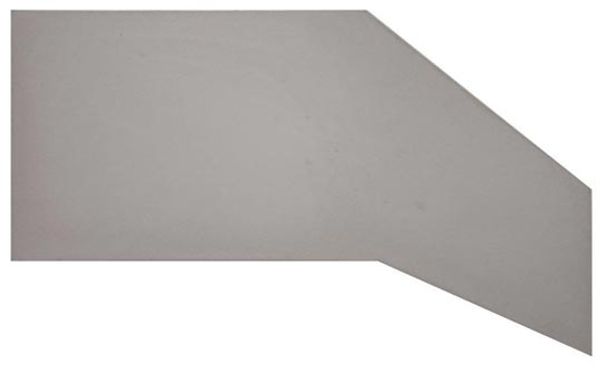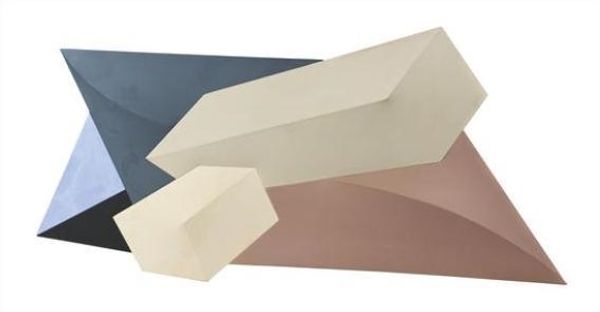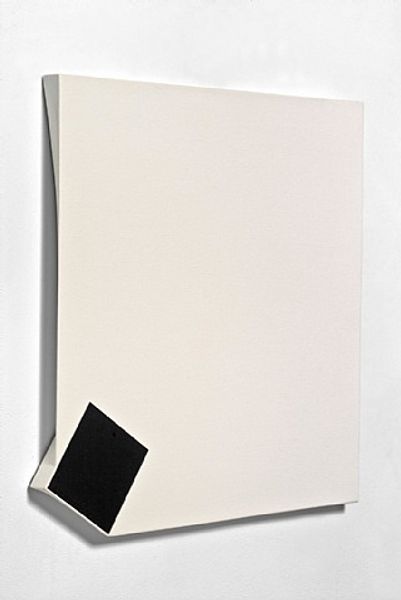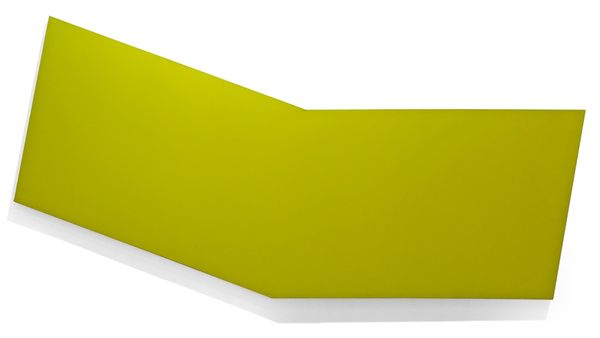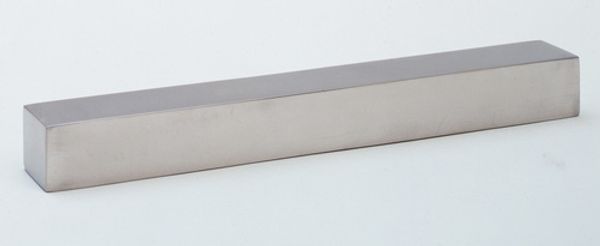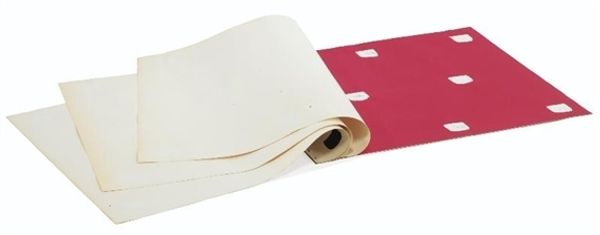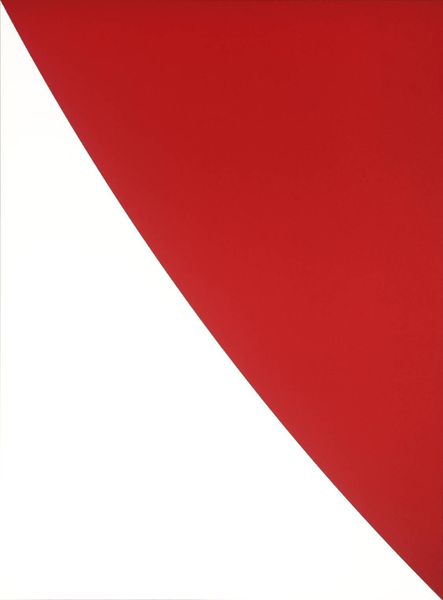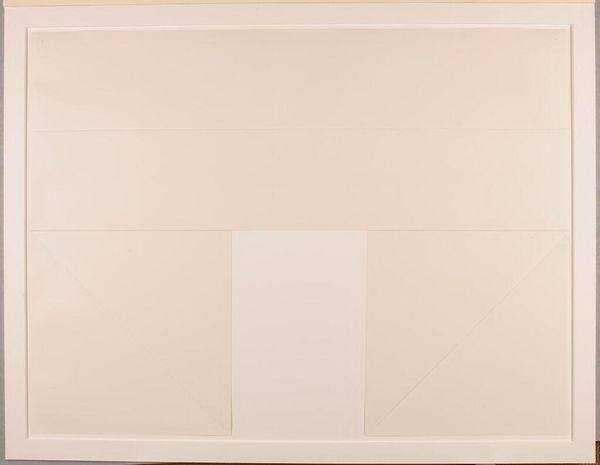
sculpture, installation-art, wood
#
minimalism
#
geometric
#
sculpture
#
geometric-abstraction
#
installation-art
#
wood
Copyright: Charles Hinman,Fair Use
Charles Hinman created "Castor and Pollux", a shaped canvas, during a period of radical experimentation with the conventions of painting and sculpture in the United States. During the 1960s, some artists began to challenge the traditional rectangular format of painting. Hinman, along with others, pushed the boundaries of what could be considered a painting by creating three-dimensional works that blurred the lines between painting and sculpture. The use of bright, unmodulated colors and geometric forms also reflects the influence of Minimalism. This approach was in dialogue with the cultural shifts of the time, questioning established norms and embracing new forms of expression. To fully understand the context, one might look to exhibition reviews and critical essays from the period. These texts would reveal the debates and discussions surrounding this kind of experimental work and its place within the broader art world. By examining such sources, we can appreciate the ways in which art is shaped by its social and institutional environment.
Comments
No comments
Be the first to comment and join the conversation on the ultimate creative platform.


